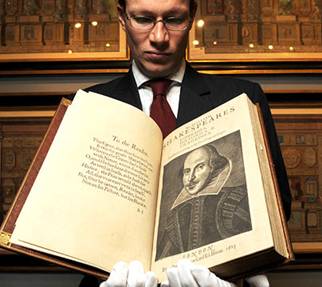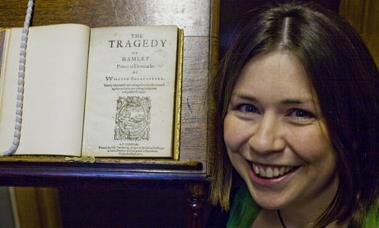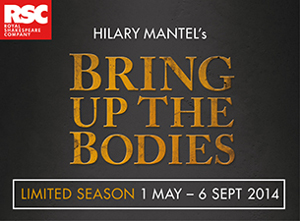
A Shakespeare Performance Resource with Audio

Versebuster© is dedicated to the performance of Shakespeare & best practice in verse-speaking.
Our product is geared to all levels of acting ability and experience to help with the demands of a unique and special art form. We cover the First Folio (F1), the 'Good' Quartos and modern texts.
 Verse makes up 72% of Shakespeare's canon
Verse makes up 72% of Shakespeare's canon 
 Verse-speaking is a tough but rewarding discipline
Verse-speaking is a tough but rewarding discipline 
 Verse-speaking has rules and guidelines, any style will not do
Verse-speaking has rules and guidelines, any style will not do 
 Shakespeare's prose has its own rules and guidelines too
Shakespeare's prose has its own rules and guidelines too 
More about rules for the rule-averse!
ANARCHY & CREATIVITY
There is a strand in contemporary thinking that believes 'rules' get in the way of originality and the creative process. In recent times some have tried to do away with the formalities of Shakespeare-speaking, in particular the architecture of verse, in pursuit of rehearsal room spontaneity and 'keeping it real'. In each and every case this has proved disastrous. Actors are unable to unleash the full potential of the text, and audiences are left with Bard-lite and not a little boredom. Peter Hall (co-founder of the Royal Shakespeare Company) and Giles Block (former ‘Master of the Words’ at Shakespeare’s Globe) elaborate on this in their respective books Playing Shakespeare and Speaking the Speech (see Bibliography).
"The skill, therefore, is not to ignore the rules or parameters, but to make them second nature so that you transcend them. Pushing against 'walls' produces great art, while anarchy leads to mediocrity"
The truth is all great art forms, whether opera, comedy, painting, dance, etc., have parameters and rules. These, in turn, give rise to the technique necessary to master them. The same can be said of sport. Unlike sport though, the rules of engagement in art are hidden from public view, but they are there and actually help the performer - just as they do in sport.
Take, for instance, Olympic ice-skating. The stage is the rink and you may not skate outside this architectural parameter. You may not wear roller blades instead. You may not fall over without incurring penalties and certain moves are banned. You may not take forever to complete your routine - besides the official time limit the audience will get restless. Yet, despite these 'irksome' rules, Olympic ice-skaters repeatedly find ways to give sublime performances.
Moreover - to continue the analogy - they get marks for technique and marks for creative interpretation. The rub is that you cannot do a great interpretation without great technique - the very point emphasised by the scoring system. It is also true to say that technique alone is unlikely to secure you gold at this level of competition. There has to be some imagination and flair in their somewhere - some creative spark, some personal stamp. But fluid and seamless, not self-indulgent.
The skill, therefore, is not to ignore the rules or parameters, but to make them second nature so that you transcend them. Pushing against 'walls' produces great art, while anarchy leads to mediocrity.
VERSEBUSTER'S 70% RULE - THE 'GET OUT OF JAIL' CARD
For those who remain allergic to the notion of rules in Shakespeare we offer three comforts.
The first is that there is almost no facet of Shakespeare about which experts can be 100% absolutely sure. Unless a personal diary emerges sensationally proven to be written in the Bard's own hand filling the many gaps that still exist in our knowledge of the man and his methods, the best anybody can say is that "such and such in Shakespeare generally holds true" and acknowledge there are occasions it doesn't. For this reason Versebuster has framed two rules with regard to Shakespeare performance - the 'Golden Rule' and the 'Seventy Per Cent Rule'. By far and away most things fall under the Seventy Per Cent (70%) Rule.
We call it the '70% Rule' because it trips off the tongue better than, say, the '82% Rule', even though that may be nearer the truth. It means that the rule in question works very well somewhere between 65% and 98% of the time. Experience and our guidance will tell you towards which end of this spectrum a given rule leans.
As to 'Golden Rules' these are rare, but there are a couple. One such is that, as John Barton (RSC) says, you must always identify antitheses in Shakespeare's text and point them up. Arguably this rule trumps any other rule.
YOUR PERSONAL STAMP
The second dollop of comfort is that rules don't negate the personal acting choices which make your performance unique. For instance, a certain rule may say that when such and such is encountered the actor must emphasise it. But HOW you emphasise is up to you. Typically one emphasises by increasing volume, but many interesting alternatives exist. You could, instead, alter tone, pace, pitch, or switch to sotto or a whisper.
AMBIGUITY
The final comfort that ensures no two performances in Shakespeare will be alike is ambiguity.
When the Hostess recounts the death of Falstaff at the beginning of Act 2:3 in Henry V and relates that "he cried out 'God, God, God' three or four times", what tone does she assume? Is she inferring that Falstaff, in his final moments of senescence, is excitedly greeting God, or that he is in absolute terror of Him for a lifetime of thieving and whoring? Shakespeare provides no answer. So two (or more) perfectly valid, but diametrically opposed interpretations are possible which might substantially alter, if the actor were alive to the possibilities, their delivery of 'God, God, God'.
Within a Shakespeare play there might be a run of such ambiguities one scene after another and each time actors have to choose a plausible motivation, because, if not, performance and delivery lose focus and become generalised. Generalisation is theatrical boredom. So you have to commit. And the way you interpret (with or without the help of a director) will not be the same as the actor who played the same role last month. You are unique and this will bring, willy-nilly, a different perspective to the interpretation and a different way of dramatising it - gestures, voice, pace, expression and all.
Whatever motivations actors commit to in these moments of ambiguity will 'ring true' to the audience so long as they can be justified by the text, and external stuff (like a director's political agenda or an actor's personal hang-up) does not take precedence.
CONCLUSION
Don't imagine rules will cramp your style and individuality. Within the rules you have creative choices. Trust in Shakespeare's architecture; it's there to help you.
CORE PRODUCT
THEATRE SCRIPTS - a choice of printable A4 scripts (full play, scenes, individual speeches) and an A3 landscape version for personal computer use or group-sharing via projector. Big easy-to-read font and generous spacing all round for personal mark-up and director notes. Scripts for full-play and scenes, or just for individual speeches. Ideal for learning lines and audition speeches.
ePLAYS - the engine of Versebuster. They aim to provide four overlapping elements: (i) an in-depth performance-relevant glossary; (ii) verse-line scansion and syllable count leading to suggested elisions and pronunciations; (iii) a line-by-line comparison of the text, lineation, Speech Headers and Stage Directions of five well-known editions owing to significant discrepancies between them; and (iv) a quick and easy way to spot Shakespeare's key rhetorical devices.
AUDIO BANK - over 500 specially recorded speeches to illustrate aspects of performance information embedded in the text.
VIDEO SLIDE SHOWS - 'step-by-step' Beginner, Intermediate & Advanced methodology for understanding all aspects of Shakespearean stagecraft and verse-speaking in an attractive format for individual or group use. All 80 of the slide shows will eventually have a 'Get it? Got it!' Q and A section at the end.
Based on the collective expertise of
Giles Block | Ian McKellen | Abigail Rokison | Peter Hall | John Barton | Patrick Tucker | Neil Freeman | Cicely Berry | Kristin Linklater
and other Shakespeare luminaries
Who Versebuster Benefits
Audio database:
helps Shakespeare newcomers choose audition speeches and get an instant idea of the shape and argument of a speech
allows experienced performers to cross-reference with our recordings and have fun improving on them
ePlays in pdf (A3 landscape format) provide:
exceptionally thorough, performance-relevant definitions and commentary
easy-to-follow-notations like musical scoring to check that that you've picked up all the performance clues
easy line-by-line comparison with five well-known editions so you are empowered at all times to pick and choose which text, lineation, Speech Header or Stage Direction best serves your purpose (there can be significant differences between editions)
Theatre scripts:
are produced in Arial font size 12 for easy reading
come in a choice of three formats - Option 1 'Standard', Option 2 'Observation' (speeches only), & Option 3 'Phrasing' (see the DEMOs in the Theatre Script Options table)
have generous line spacing and surrounding white space to make your own notes
We suggest you use Option 1 Standard A4 'text only' script for your personal mark-up and scoring, drawing on information from (i) the Option 2 & 3 scripts (ii) the ePlay, (iii) your director. If you make a mess of a page just reprint and tidy - you can't do that with a book!
Our materials make ideal teaching aids. Inexpensive, accessible, comprehensive. They can help to liven up and add interest to classes and workshops:
ePlays can be projected on walls to share with large numbers. The excellent definitions and clearly sign-posted clues using our intuitive, critically-acclaimed notation system makes them the perfect teaching prop.
Slide-show 'step-by-step' guides (which can also be projected on walls) illustrate the professional methodology for approaching any text. They demystify and simplify the process by breaking the methodology down into bite-size, digestible sections. Slide-shows range from beginner to advanced.
For schools our ePlays come in a simplified version that also omit the 'adult' definitions of Shakespeare's numerous sexual references and bawdy puns.
Our audio bank of 500 plus speeches covering all 38 plays can be instantly accessed and played to help illustrate points, illuminate difficult speeches, invite debate and encourage constructive criticism.
Theatre scripts come in four designs to meet differing acting / teaching needs:
Option 1 is a standard 'text only' A4 script. This is available for the full play and for individual speeches. It is deliberately plain and has plenty of white space in and around the text for notes. We suggest this is the one actors and students use to mark up their own copy drawing on information in the ePlay, the more advanced 'preparation' theatre scripts below and the teacher's own guidance. If, over the course of rehearsals / workshops, they make a mess of the script, they simply re-print the relevant pages and tidy up their notes and scoring.
Option 2 - individual speeches only. Presented in a choice of A4 portrait or A3 landscape format, the A4 is principally designed for those that want hard-copy, while the A3 is principally designed for personal study on an electronic device or for group-sharing with a projector. There is (i) a line-by-line verse syllable count together with (ii) other useful performance / teaching features, and (iii) Versebuster's own observations on the speech.
Option 3, available for the full play and for individual speeches, focuses on phrasing and places of emphasis using the performance information in the ePlay resource. We believe it is particularly useful for beginners or early-stage performance preparation. Though metre and rhythm is of course important (and dealt with line-by-line in the ePlay), it helps get beyond, as Ian McKellen would endorse*, iambic sing-song musicality. Nouns, active verbs, interesting adjectives, naturally suspenseful words and caesuras are all scored. The 70% Rule. Please note phrasing and placement of emphasis is 30% subjective 70% objective and conforms to our House Rule that nothing in Shakespeare is absolute. We trust the script is a useful starting point, but feel free to explore and go off-piste. *based on lectures he has given
Option 4 (individual speeches only) is a verse speech re-formatted as prose to illustrate the performance difference between a 'verse-reading' of verse and a 'prose-reading' of verse. In his earliest plays Shakespeare set down verse-lines in orderly fashion, like planks of wood on a slatted Nantucket house. Therefore, the exercise has greater value when Shakespeare moved away from this 'plank end-stopping' to 'enjambement' (the sense flows over into the next line). It should be noted, however, even Richard lll, only his fourth play, has enjambed lines - the Bard developed his craft with astonishing speed.
EPLAYS
Our superbly annotated ePlays:
enable direct line-by-line comparison of our text, lineation, Speech Headers and Stage Directions against that of five well-known editions
give a syllable count for each verse line
graphically identify repetitions (synonyms), antitheses, puns, rhetorical speech builds, etc
graphically identify interesting switches between 'you' and 'thou'
graphically identify monosyllabic lines, alliteration, assonance, trochaic feet, etc.
identify sarcasm, irony, and sexual innuendo
The pdf ePlays are A3 in landscape format. If you want to share with them with your actors, use a laptop for one-on-one and a projector for a group. (They are not designed or configured for printing.)
THEATRE SCRIPTS
For productions (as opposed to workshops and classrooms) we have a choice of two full-play printable theatre scripts in an A4 format. They both come with Arial size 12 font for easy reading and plenty of white space around the text and between lines for director and / or actor notes.
Option 1 Standard A4 script is 'text only'. It is deliberately plain and has plenty of white space in and around the text for notes. We suggest this is the one actors use to mark up their own copy drawing on information from (i) the ePlay (ii) Option 2 theatre scripts which focus on our technical observations about key speeches (iii) the Option 3 full-play theatre script which focuses on our personal suggestions phrasing and emphasis (see below) (iv) your own guidance. If, over the course of your rehearsals, they make a mess of the script, they simply reprint the relevant pages and tidy up their notes and scoring.
Option 3 'Phrasing' script uses the information in the ePlay resource to focus on phrasing and places of emphasis. We believe it is particularly useful for beginners or early-stage performance preparation. Though metre and rhythm is of course important (and dealt with line-by-line in the ePlay), it helps, as Ian McKellen would endorse, get beyond iambic sing-song musicality. Nouns, active verbs, interesting adjectives, naturally suspenseful words and caesuras are all scored. In addition, there is a line-by-line verse syllable count together with other useful performance features. The 70% Rule. Please note phrasing and placement of emphasis is 30% subjective 70% objective and conforms to our House Rule that nothing in Shakespeare is absolute. We trust the script is a useful starting point, but feel free to explore and go off-piste.
Please see Theatre Script DEMOs for samples of the above.
You will notice that the scripts have a few colour elements for computer / workshop projector use. However, they print very well in B & W. They also print well double-sided (we suggest A4 70gsm or A4 80gsm standard office weight).
AUDIO SPEECHES
We aim to find all the performance clues in our recordings, which means they are a reasonably decent guide to the shape and nuance of speeches. If an actor is struggling, to give them a leg up you can exercise your discretion whether to play them our version.
We never claim our recordings are definitive but they are competent, even if you don’t happen to like our choices. With your guidance your actors will undoubtedly do a better job!
Shakespeare's Performance Clues For Actors
Shakespeare directs and choreographs his plays through the myriad performance clues he embedded in the text for the benefit of professional actors he knew well - line by line, phrase by phrase, word by word.
It does great harm to his plays and a major disservice to the audience if these are ignored. Many have written about these clues and the demands they make on speaking and performing Shakespeare. For the first time on the Internet, Versebuster© brings it all together under one roof. Here are some of the clues and topics we cover (many overlap):
Prose v. verse
Differences in form / layout / architecture
Disguise v. truthfulness and other implications
Different types of prose & verse
Regular v. irregular verse
Long lines (hexameters {Alexandrines}, heptameters, etc), short lines, half lines and shared lines
Metre & rhythm
Elision (contraction) & expansion
Verse line-endings & mid-line endings
End-stopped v. enjambement [or enjambment]
Masculine line-endings v. feminine line-endings
Masculine caesuras (caesurae) v. feminine caesuras (caesurae)
Monosyllabic lines v. Latinate lines
Simple lines v. complex lines
Major v. minor punctuation
Verbal conceits / patterns such as antitheses, repetitions (synonyms and their modifiers), rhymes, puns, alliteration & assonance
Short vowels v. long vowels
Lists and speech builds
'You' v. 'thou' & other modes of address
Irony, sarcasm, sardonic humour & bawdry
Illustration
Controversy
While there is broad consensus on some issues relating to Shakespeare performance there is rarely unanimity and controversy is never far away. The two most contentious issues are:
-
Which script to use. It comes as a surprise to many people there is no settled and fixed text for many of Shakespeare’s plays. Part of the reason is that virtually nothing survives in the Bard’s own hand. Some argue the First Folio ('F1') of 1623 is the only true performance text, while others prefer an earlier Quarto for some 12 or so of his plays. For instance, for Richard lll, our inaugural play, expert opinion is divided whether Quarto 1 ('Q1') of 1597 should be deemed the true original performance text, or the F1 version which came seven years after Shakespeare's death in 1616.
The most commonly used script for performance though, either through unawareness or conscious choice, is the modern ‘literary’ texts devised for schools – Pelican, Penguin, Arden, (New) Cambridge, (New) Oxford, Signet, etc – even No Fear has its advocates.
Though we agonised about it for two years we decided in the end to make Versebuster© modern as well. However, we gear our script to performance needs rather than those of the classroom. This is most evidently manifest in the 'performance punctuation' which, in this respect, glances at the original texts.
For those interested, Section D our ePlay resource sets our modern script side-by-side with First Folio and a Good Quarto (where applicable) for easy comparison.
-
Line-endings in verse. Some believe that the end of a verse line whose sense is incomplete nonetheless marks a caesura (a pause); and that this, in turn, invites a breath - or at least a little lift - at the end of the verse line before tumbling into the next. Others believe this is nonsense and, in essence, verse should be read as prose.
To consider this issue Dr Abigail Rokison-Woodall - now a senior Lecturer at the Shakespeare Institute, Stratford-upon-Avon - wrote a doctoral thesis at Cambridge, later published as Shakespeare Verse Speaking. We incorporate the findings of her award-winning, critically-acclaimed book into our output.

The First Folio of 1623 - one of only 228 surviving out of 750 thought to have been originally printed
Photograph by Geoff Pugh
Other Areas Of Shakespeare Performance We Cover:
Elizabethan rhetoric & the art of persuasion
Stanislavsky [or Stanislavski] and Shakespeare
The Soliloquy
Pronunciation and the 'Great Vowel Shift'
Acoustic punctuation v. literary punctuation
First Folio punctuation
Where to breathe in verse
The earned v. the unearned pause
Vocal delivery
Speed v. pace
Enunciation v. slurring
Vocal facility

Pip Willcox, Curator of Digital Special Collections at the Bodleian Libraries, University of Oxford, displays a 1611 quarto edition of Hamlet
Photograph by Martin Argles

Copyright © 2010-2020 Versebuster, ℗ 2010-2020 Versebuster. All rights reserved.






